Ready to Eat
Independent garden centers can’t make up for lost sales by changing the weather, but some businesses are taking a “Think Food” approach to boosting their bottom lines.
The winter of 2011 was one for the record books. Wave after wave of bad weather flooded across the country, stranding travelers and forcing businesses to close early. For most businesses, weather rarely carves a big hole in their annual sales numbers. For garden center owners, many of whom already keep seasonal schedules, losing a few days of sales can have a brutal impact on the year’s financial success.
Today’s garden centers and nurseries are typically busy during spring, fall and the winter holiday season. Although customer visits for each garden center vary, a loyal customer may make five to 10 visits per year. Just a few days’ bad weather in the busy months of April, May or June can cut down on customer visits that might not be recovered when the weather improves.
The retail garden center industry can’t make up for lost sales by changing the weather but some businesses are taking an “out of the garden” approach to boosting their bottom lines. They are attracting new shoppers and encouraging additional visits by existing customers, especially during traditionally slow times of the year, by turning their garden centers into destination centers.
Today’s food trends local, sustainable, organic, pesticide-free, humanely grown, home-made, and fresh are a natural fit with retail garden centers, creating opportunities for incremental seasonal sales and reinforcing customer interest throughout the year. Taking advantage of these food trends doesn’t require a chef-inspired kitchen or a full-blown grocery store. Some niche operations can be successful without major capital costs but even the simplest requires due diligence and the input of professional designers, architects and engineers familiar with our industry, your facility and local codes. Here’s a look at some of the trends that are gaining popularity and factors that are driving their acceptance in our industry.
Cafés
Cafés offer several options with different financial and operational requirements. For the first option, a café that serves salads, pre-made sandwiches and other “ready-to-serve” foods will require little kitchen preparation or equipment. Food costs and labor ratios are predictable and modest. Alternately, a café that prepares most of its food on-site in a full kitchen requires a more substantial investment in food preparation and storage equipment. In addition, there are likely to be more compliance requirements for the full-service café. They will need to meet tougher health and building department regulations that may also include certain zoning requirements. Open fryers and griddles will typically require fire suppression systems. Additional considerations range from adequate parking to employee training, customer restrooms and the impact on your garden center’s physical layout.
Ice Cream and Smoothies
Ice cream and smoothies give customers almost unlimited options. Estimated costs for soft ice cream are $.05 per ounce. A regular cone of 5 ounces would sell for a $2.25 cost. A new generation of easy-to-clean, simple-to-operate soft ice cream machines costing $9,000 to $21,000 and capable of producing dozens of ice cream and healthy yogurt flavors has made soft-serve the more popular option.
Smoothie machines typically cost $7,000 – $14,000 (medium to high volume), with paybacks running between 1-3 years. Hard ice cream costs about $.25 per ounce to produce and requires freezer capacity for inventory and display, which reduces the profit. Smoothies are especially versatile. Today’s Flavor Burst style ice cream machine, for example, can make dozens of flavors of ice cream and frozen yogurt. Fruit-based smoothies appeal to health-conscious consumers. Adding toppings to the menu increases profitability, making this niche opportunity an even sweeter deal.
Fudge
Fudge is a perennial favorite and is a relatively low-risk investment. Fudge can be made from packaged ingredients or purchased in ready-to-serve “slabs” from vendors. Display of the product is critical to the success of any fudge sales program. Fudge can be prepared on a marble slab in view of customers, who love to watch the process.
Local Produce
Local fruits and vegetables can be offered seasonally, taking advantage of the strong “locally grown” food trend. Carrying local fruits and produce can go a long way to reinforcing the garden center’s community connections. In addition to Christmas trees from its own 10-acre farm and thriving garden center, for example, Connecticut’s Karabin Farms, “sells the sizzle” with honey produced on their farm and maple syrup that comes from their own trees and is cooked down in their own cookers. In New Jersey, Heaven Hill Farm emphasizes the freshness of its local produce. Heaven Hill explains, “The difference in our farm market produce is in the freshness, the color and the flavor there is simply no comparison to what you typically find at the local supermarket.” Don’t forget the incremental sales add-ons! Balsamic vinegar, flavored oils and dressings all make those fresh local tomatoes and salad greens even more enticing.
Fresh herbs and spices have skyrocketed in popularity as consumers turn their sights to cooking at home. Major plant breeders have recognized consumer interest and are pushing the market. You can optimize your herb sales by actively promoting them. Recipe cards, cooking demonstrations by local chefs, classes in the use of herbs for health all contribute to a strong market for herbs and spices. Many garden centers are even providing “bulk” herbs and spices.
Jarred & Canned
Jellies, jams, sauces, pickled fruits and vegetables these are just a few of the products that draw customers in again and again. The products can be strictly local or more widely sourced, depending on the owner’s preference and market. Goebbert’s Farm & Garden Center in Illinois offers hand-picked specialty food products and gifts ranging from preserves and jams to fruit butters and fresh-grown popcorn. In New Jersey, Heaven Hill Farm sells jams, jellies and sauces but it also carries local eggs and dairy products. (Eggs and dairy may require extra equipment for refrigeration and additional health and safety procedures.)
Wine is also becoming popular, especially when it comes from local wineries. State wine licenses are often more affordable and accessible than liquor licenses that allow the sale of alcohol products from around the world. Talk to your insurance company about potential liability issues if you are doing wine tastings on site. Dry goods such as chips, crackers and specialty coffees increase the potential for sales with minimal handling and storage costs. Custom four-color private labeling is a must with dry and jar products.
Donuts
Donuts sales are one of the most important trends for retail garden centers. They are simple to make, attractive and versatile. Frozen, “bake-off” donuts simply require baking, cooling, adding icings or other toppings. An alternative is donuts made from pre-packaged cake and yeast mixes and cooked in a hot-oil donut machine. Typically, hot-oil machines that are used inside will require a fire suppression system (Ansul System), which is an added expense. In some locations, that requirement is waived if the machine is located outside.
Most garden centers target donut sales to the fall and holiday seasons, often flavoring the donuts with fresh cider and offering locally produced hot cider to highlight the tastes of the season. A high-volume donut machine capable of making
5½ dozen donuts in six minutes costs between $14,000 and $18,000. The cost per dozen, including both materials and labor, is approximately $2.25, with donuts selling for $.75 each or $6.99/dozen. At Karabin Farms, where donuts are sold from September to Christmas, the donut machine paid for itself in one year!
Baked Goods
Fresh-baked pies, breads and cakes can increase traffic and keep customers coming back again and again. That’s a pattern any garden center would love. Consider some of the numbers. Most pies are pre-made, requiring only that they be thawed and/or baked. An average 9-inch fruit pie costs $5 to $6.25, without a box. The average retail price for a 9-inch fruit pie in our industry is $12 to $14, without a box. (Quality logo boxes, printed or with decals, go for about $1.25 to $1.50.) Equipment costs can be significant for any bakery, but the payback may be fast. A new Hobart Rack Oven, for example, costs approximately $21,000 and bakes 60 pies at the same time. The equipment paid for itself in three seasons at one successful garden center. Smaller-volume ovens start at $9,000.
Don’t forget about good quality used restaurant equipment from your local restaurant supply house. Bakery items including pies, cakes and breads have produced tangible results in dollars and cents for garden centers. Tom’s Farm Market and Greenhouses in northern Illinois, for example, sells about 14,000 premium 10-inch fruit pies yearly through direct retail in addition to donuts that are sold only from September to December and mini-loaves of bread sold year-round. According to Tom’s, the bakery operation has shown the highest percentage increase when compared to all other departments.
Questions to Consider
Retail farm markets and garden centers with successful food departments balance risk and opportunity, providing a road map for other garden centers. Consider the impact on parking if you seat patrons instead of providing only take-away items. Serving food on premises can also affect your physical facilities, such as restrooms, and the need for air-conditioning or heating. Does it make sense to offer food items year-round or just seasonally? Food and labor costs will vary widely among the various options. What, if any, structural changes will you have to make to your existing buildings to accommodate different food operations?
The most important factor in building a strong food department for your garden center is identifying the products that your market will buy, not just once but repeatedly. An incremental sales department has to be a profit center, not just another piece of overhead!






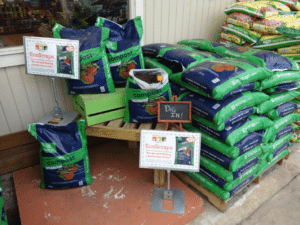

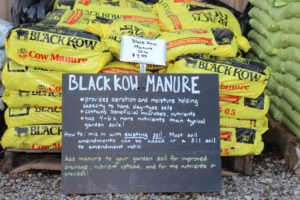
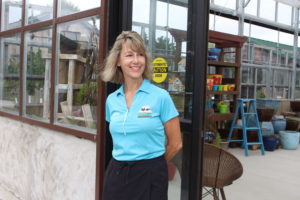





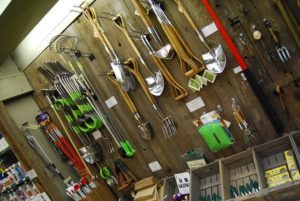
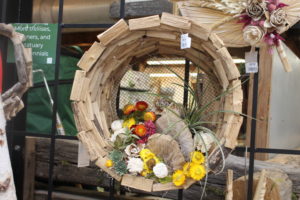

 Videos
Videos





